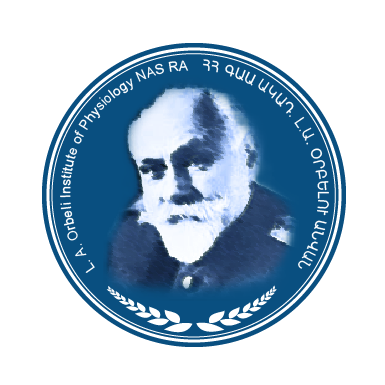- Home
- About us
- Laboratories
- Central Nervous System Physiology
- Central Nervous System functions compensation Physiology
- Immunology and Tissue Engineering
- Smooth Muscle Physiology
- Toxinology and Molecular Systematics
- Sensorimotor Integration
- Laboratory of Histochemistry and Morphology
- Human Psychophysiology
- Integrative Biology
- Purification, Certification and Standardization of Physiologically active substances
- Neuroendocrine Relationships
- Distance Լearning Center
- News & Events
- Master's Program
- Research
- Councils
- Contact Us
- OIPH Docs
L. A. Orbeli Institute of
Physiology NAS RA
We are honored to present the ERA Chair holder of the newly establishing Regional Center of Excellence at the Orbeli Institute of Physiology of NAS RA in frame of the Horizon Europe Grant Project NAR-SAR-IPH-101087403

Narine Sarvazyan is a tenured Professor of Physiology and Pharmacology at the George Washington University School of Medicine and Health Sciences. She has been working in the field of cardiac physiology for nearly three decades. Throughout these years her lab has been continuously funded by the United States National Institutes of Health, the National Science Foundation, and the American Heart Association. She is the United States Fulbright Scholar, the American Heart Association Established Investigator, and the recipient of the Distinguished Teacher Award from both Texas Tech and George Washington Universities. She mentored numerous students, postdoctoral researchers, and medical fellows, with several of her former trainees currently leading their own labs. She holds a number of key US patents in the fields of spectral imaging and tissue engineering. Results of her studies have been published in highly respectable journals such as Nature, Cancer Research, Biophysical Journal, American Journal of Physiology, and many others.
Prof. Sarvazyan’s research interests encompass a wide variety of projects. Early on she used oxidant-sensitive dyes for in vivo visualization of oxidative stress caused by cancer drugs, then proceeded to use confocal microscopy and optical mapping techniques to reveal the cellular origins of cardiac arrhythmias. These studies helped to develop a new theoretical framework to explain complex spatiotemporal patterns observed during the experimental models of ectopic arrhythmias. For the last decade, her group has been using different imaging devices to collect and analyze endogenous tissue autofluorescence. Together with her industry partners, she led the development of the first percutaneous hyperspectral catheter for live intracardiac imaging. Another line of research pursued by Prof. Sarvazyan’s team involves the creation of tissue- engineered minipumps that can assist the flow of biological fluids. Such biomimetic pumps can have multiple applications, ranging from organ-on-chip devices to in vivo implantation to aid the delivery of body fluids.




